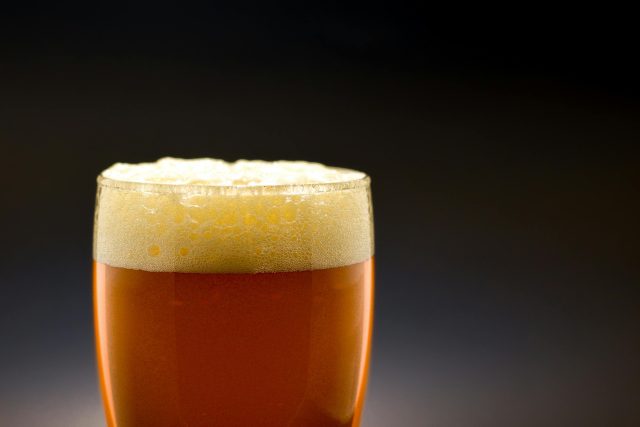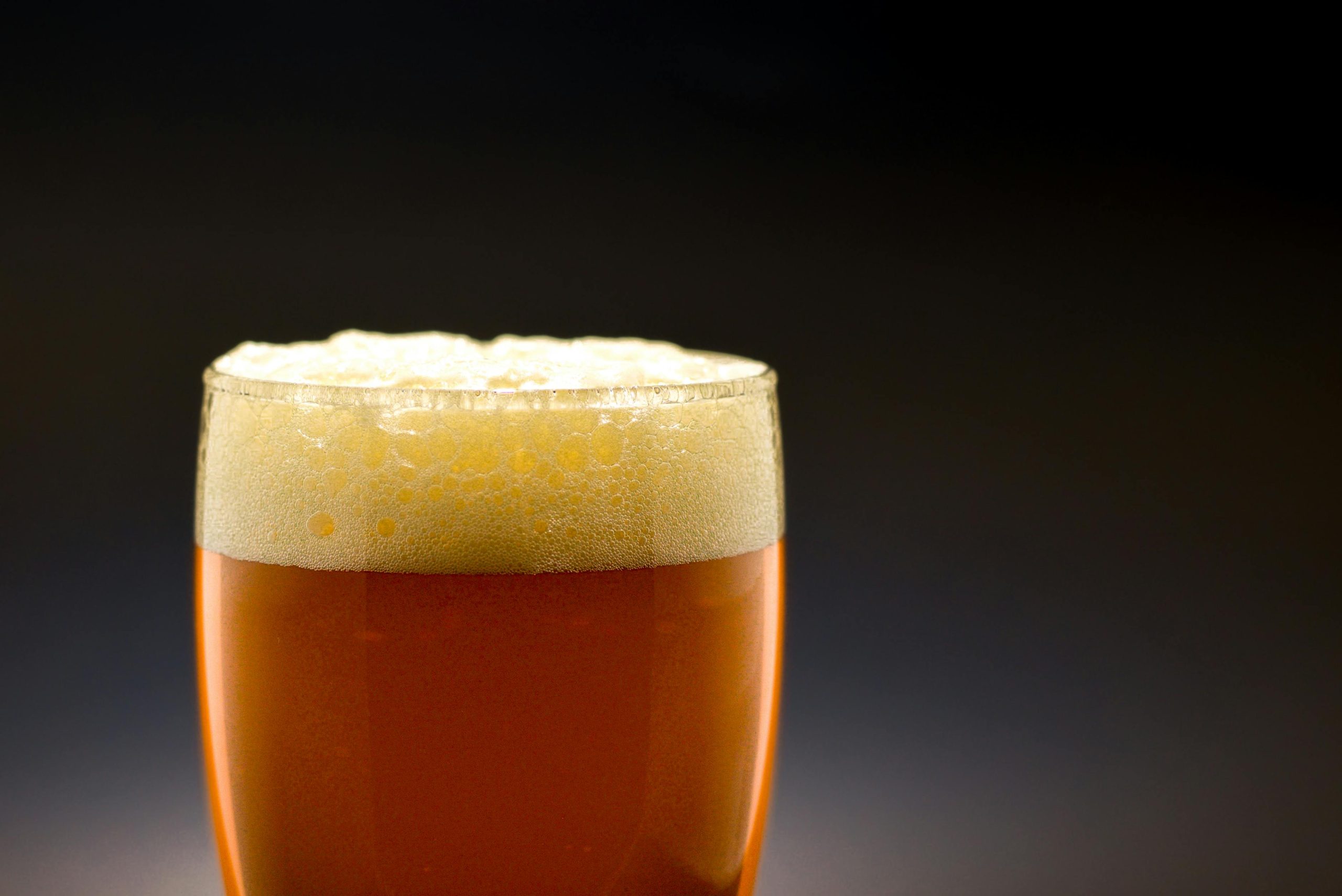Scientists have found new beer styles could be created by applying “adaptive evolution” techniques to wine yeasts.

In new research, scientists from the Microorganism Culture Collection of the Kayta company worked in collaboration with LAMAP-University of Santiago of Chile to discover the possibilities of wine yeasts being used to expand beer's repertoire of styles for the future.
Historically, saccharomyces cerevisiae brewing yeasts have held specific genetic characteristics that only allow them to survive in malt wort using maltose and maltotriose as the principal carbon source. However, scientists have admitted that metabolising these sugars has been challenging for non-brewery saccharomyces strains under typical brewing conditions, which involve “high osmotic stress and low temperatures”. The research pointed out that ordinarily, “these conditions restrict beer producers to a limited range of yeast strains,
increasing their cost and contributing to beer flavours uniformity”.
As part of the research, scientists took regional saccharomyces cerevisiaeisolates from 12 different viticulture places in Chile. Added to this, they also used strains isolated from Argentine Patagonia as a reference, due to their brewing capacities.
Following this, the scientists performed lan adaptive evolution process to improve the fermentative capacities” of the winemaking yeasts isolated from Chilean vineyards to allow their use in brewing.
The scientists revealed in a
Frontiers of Microbiology report that they "obtained an evolved strain that was able to consume maltose and maltotriose, growing in very high gravity wort (29°P) and at low temperatures (18°C) without shaking" and "used DNA sequencing to examine genome changes that could explain the superior beermaking phenotype of the evolved strain”.
The scientists highlighted also how “these genes are related to wine yeast survival under the stress conditions of grape must (lower pH, higher glucose and ethanol concentration than wort)". This led to the conclusion that "results show a successful application of high stress levels to evolve regional winemaking strains to improve their fermentative traits for the brewing process". This means that, in future, "applying this method will make it possible to obtain yeasts that can carry out alcoholic fermentation in wort without having to buy unique strains called brewing yeasts”.
The results additionally showed that it was possible to create new beer styles that reflected greater alcoholic complexity due to "higher attenuation" as well as in styles that had additional charcteristics such as highly sought-after “exotic” aromas and flavours that had the potential to make the beers created stand out from others made with the yeast strains used by brewers currently that have been more commercially available.
The scientists explained: “In this study, we performed an adaptive evolution programme using Chilean native wine yeasts as a strategy to obtain brewery yeasts. The evolved obtained strain produced a beer with higher attenuation and ethanol concentration than the parental strain. Likewise, the evolved strain showed higher ester complexity and exotic odours, making it different from the commercial strain used."
The research concluded that it is possible to enhance non-brewing yeasts to be used in creating beers in future, a move that will undoubtedly assist in moving the beer sector forwards and assist in its overall evolution and success.
The scientists added: "This work indicates that obtaining strains with specific characteristics is possible using adaptive evolution, a method that generates indirect mutations (non-GMO). The use of genetically modified
(GM) yeast being used more widely in brewing is currently being hotly debated within the global beer sector with the topic becoming hugely divisive. However, this study indicates that by applying adaptive evolution, it is possible to enhance the use of yeasts belonging to non-brewing origins and unrelated technological applications in beer production, which could carry out efficient brewing fermentation.”
db recently looked into how
liquid yeast, used by many breweries and wineries, is forecast to grow globally by US$3.34 billion from 2024-2028 and also

 In new research, scientists from the Microorganism Culture Collection of the Kayta company worked in collaboration with LAMAP-University of Santiago of Chile to discover the possibilities of wine yeasts being used to expand beer's repertoire of styles for the future.
Historically, saccharomyces cerevisiae brewing yeasts have held specific genetic characteristics that only allow them to survive in malt wort using maltose and maltotriose as the principal carbon source. However, scientists have admitted that metabolising these sugars has been challenging for non-brewery saccharomyces strains under typical brewing conditions, which involve “high osmotic stress and low temperatures”. The research pointed out that ordinarily, “these conditions restrict beer producers to a limited range of yeast strains, increasing their cost and contributing to beer flavours uniformity”.
As part of the research, scientists took regional saccharomyces cerevisiaeisolates from 12 different viticulture places in Chile. Added to this, they also used strains isolated from Argentine Patagonia as a reference, due to their brewing capacities.
Following this, the scientists performed lan adaptive evolution process to improve the fermentative capacities” of the winemaking yeasts isolated from Chilean vineyards to allow their use in brewing.
The scientists revealed in a Frontiers of Microbiology report that they "obtained an evolved strain that was able to consume maltose and maltotriose, growing in very high gravity wort (29°P) and at low temperatures (18°C) without shaking" and "used DNA sequencing to examine genome changes that could explain the superior beermaking phenotype of the evolved strain”.
The scientists highlighted also how “these genes are related to wine yeast survival under the stress conditions of grape must (lower pH, higher glucose and ethanol concentration than wort)". This led to the conclusion that "results show a successful application of high stress levels to evolve regional winemaking strains to improve their fermentative traits for the brewing process". This means that, in future, "applying this method will make it possible to obtain yeasts that can carry out alcoholic fermentation in wort without having to buy unique strains called brewing yeasts”.
The results additionally showed that it was possible to create new beer styles that reflected greater alcoholic complexity due to "higher attenuation" as well as in styles that had additional charcteristics such as highly sought-after “exotic” aromas and flavours that had the potential to make the beers created stand out from others made with the yeast strains used by brewers currently that have been more commercially available.
The scientists explained: “In this study, we performed an adaptive evolution programme using Chilean native wine yeasts as a strategy to obtain brewery yeasts. The evolved obtained strain produced a beer with higher attenuation and ethanol concentration than the parental strain. Likewise, the evolved strain showed higher ester complexity and exotic odours, making it different from the commercial strain used."
The research concluded that it is possible to enhance non-brewing yeasts to be used in creating beers in future, a move that will undoubtedly assist in moving the beer sector forwards and assist in its overall evolution and success.
The scientists added: "This work indicates that obtaining strains with specific characteristics is possible using adaptive evolution, a method that generates indirect mutations (non-GMO). The use of genetically modified (GM) yeast being used more widely in brewing is currently being hotly debated within the global beer sector with the topic becoming hugely divisive. However, this study indicates that by applying adaptive evolution, it is possible to enhance the use of yeasts belonging to non-brewing origins and unrelated technological applications in beer production, which could carry out efficient brewing fermentation.”
db recently looked into how liquid yeast, used by many breweries and wineries, is forecast to grow globally by US$3.34 billion from 2024-2028 and also
In new research, scientists from the Microorganism Culture Collection of the Kayta company worked in collaboration with LAMAP-University of Santiago of Chile to discover the possibilities of wine yeasts being used to expand beer's repertoire of styles for the future.
Historically, saccharomyces cerevisiae brewing yeasts have held specific genetic characteristics that only allow them to survive in malt wort using maltose and maltotriose as the principal carbon source. However, scientists have admitted that metabolising these sugars has been challenging for non-brewery saccharomyces strains under typical brewing conditions, which involve “high osmotic stress and low temperatures”. The research pointed out that ordinarily, “these conditions restrict beer producers to a limited range of yeast strains, increasing their cost and contributing to beer flavours uniformity”.
As part of the research, scientists took regional saccharomyces cerevisiaeisolates from 12 different viticulture places in Chile. Added to this, they also used strains isolated from Argentine Patagonia as a reference, due to their brewing capacities.
Following this, the scientists performed lan adaptive evolution process to improve the fermentative capacities” of the winemaking yeasts isolated from Chilean vineyards to allow their use in brewing.
The scientists revealed in a Frontiers of Microbiology report that they "obtained an evolved strain that was able to consume maltose and maltotriose, growing in very high gravity wort (29°P) and at low temperatures (18°C) without shaking" and "used DNA sequencing to examine genome changes that could explain the superior beermaking phenotype of the evolved strain”.
The scientists highlighted also how “these genes are related to wine yeast survival under the stress conditions of grape must (lower pH, higher glucose and ethanol concentration than wort)". This led to the conclusion that "results show a successful application of high stress levels to evolve regional winemaking strains to improve their fermentative traits for the brewing process". This means that, in future, "applying this method will make it possible to obtain yeasts that can carry out alcoholic fermentation in wort without having to buy unique strains called brewing yeasts”.
The results additionally showed that it was possible to create new beer styles that reflected greater alcoholic complexity due to "higher attenuation" as well as in styles that had additional charcteristics such as highly sought-after “exotic” aromas and flavours that had the potential to make the beers created stand out from others made with the yeast strains used by brewers currently that have been more commercially available.
The scientists explained: “In this study, we performed an adaptive evolution programme using Chilean native wine yeasts as a strategy to obtain brewery yeasts. The evolved obtained strain produced a beer with higher attenuation and ethanol concentration than the parental strain. Likewise, the evolved strain showed higher ester complexity and exotic odours, making it different from the commercial strain used."
The research concluded that it is possible to enhance non-brewing yeasts to be used in creating beers in future, a move that will undoubtedly assist in moving the beer sector forwards and assist in its overall evolution and success.
The scientists added: "This work indicates that obtaining strains with specific characteristics is possible using adaptive evolution, a method that generates indirect mutations (non-GMO). The use of genetically modified (GM) yeast being used more widely in brewing is currently being hotly debated within the global beer sector with the topic becoming hugely divisive. However, this study indicates that by applying adaptive evolution, it is possible to enhance the use of yeasts belonging to non-brewing origins and unrelated technological applications in beer production, which could carry out efficient brewing fermentation.”
db recently looked into how liquid yeast, used by many breweries and wineries, is forecast to grow globally by US$3.34 billion from 2024-2028 and also 


















































































![The American contingent and Turkey’s autonomy goals: Paris Air Show Day 3 [Video]](https://breakingdefense.com/wp-content/uploads/sites/3/2025/06/Wednesday-Wrap.00_00_32_21.Still001.png?#)
![A look at the jets flying high above the Paris Air Show [PHOTOS]](https://breakingdefense.com/wp-content/uploads/sites/3/2025/06/Rafale_02-scaled-e1750268097167.jpg?#)


























































